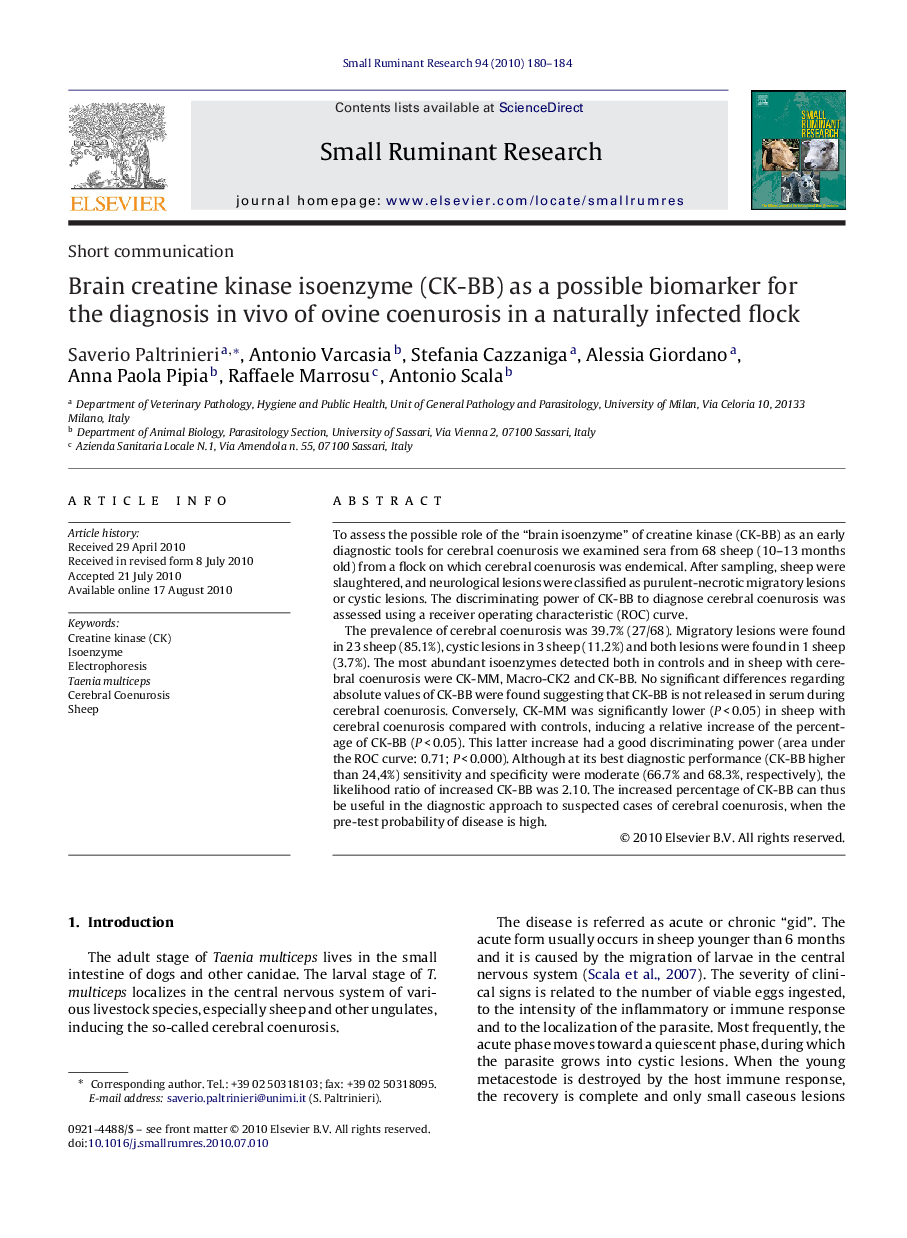| Article ID | Journal | Published Year | Pages | File Type |
|---|---|---|---|---|
| 2457367 | Small Ruminant Research | 2010 | 5 Pages |
To assess the possible role of the “brain isoenzyme” of creatine kinase (CK-BB) as an early diagnostic tools for cerebral coenurosis we examined sera from 68 sheep (10–13 months old) from a flock on which cerebral coenurosis was endemical. After sampling, sheep were slaughtered, and neurological lesions were classified as purulent-necrotic migratory lesions or cystic lesions. The discriminating power of CK-BB to diagnose cerebral coenurosis was assessed using a receiver operating characteristic (ROC) curve.The prevalence of cerebral coenurosis was 39.7% (27/68). Migratory lesions were found in 23 sheep (85.1%), cystic lesions in 3 sheep (11.2%) and both lesions were found in 1 sheep (3.7%). The most abundant isoenzymes detected both in controls and in sheep with cerebral coenurosis were CK-MM, Macro-CK2 and CK-BB. No significant differences regarding absolute values of CK-BB were found suggesting that CK-BB is not released in serum during cerebral coenurosis. Conversely, CK-MM was significantly lower (P < 0.05) in sheep with cerebral coenurosis compared with controls, inducing a relative increase of the percentage of CK-BB (P < 0.05). This latter increase had a good discriminating power (area under the ROC curve: 0.71; P < 0.000). Although at its best diagnostic performance (CK-BB higher than 24,4%) sensitivity and specificity were moderate (66.7% and 68.3%, respectively), the likelihood ratio of increased CK-BB was 2.10. The increased percentage of CK-BB can thus be useful in the diagnostic approach to suspected cases of cerebral coenurosis, when the pre-test probability of disease is high.
